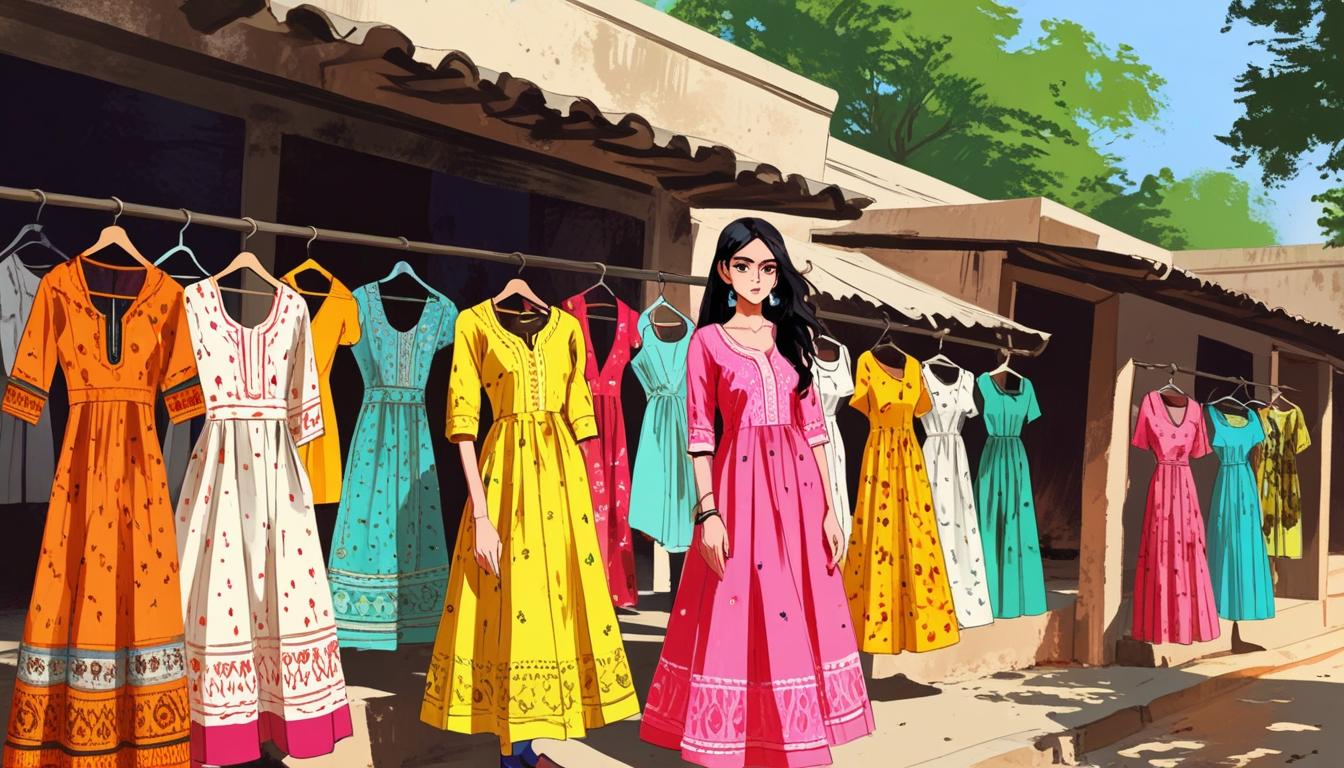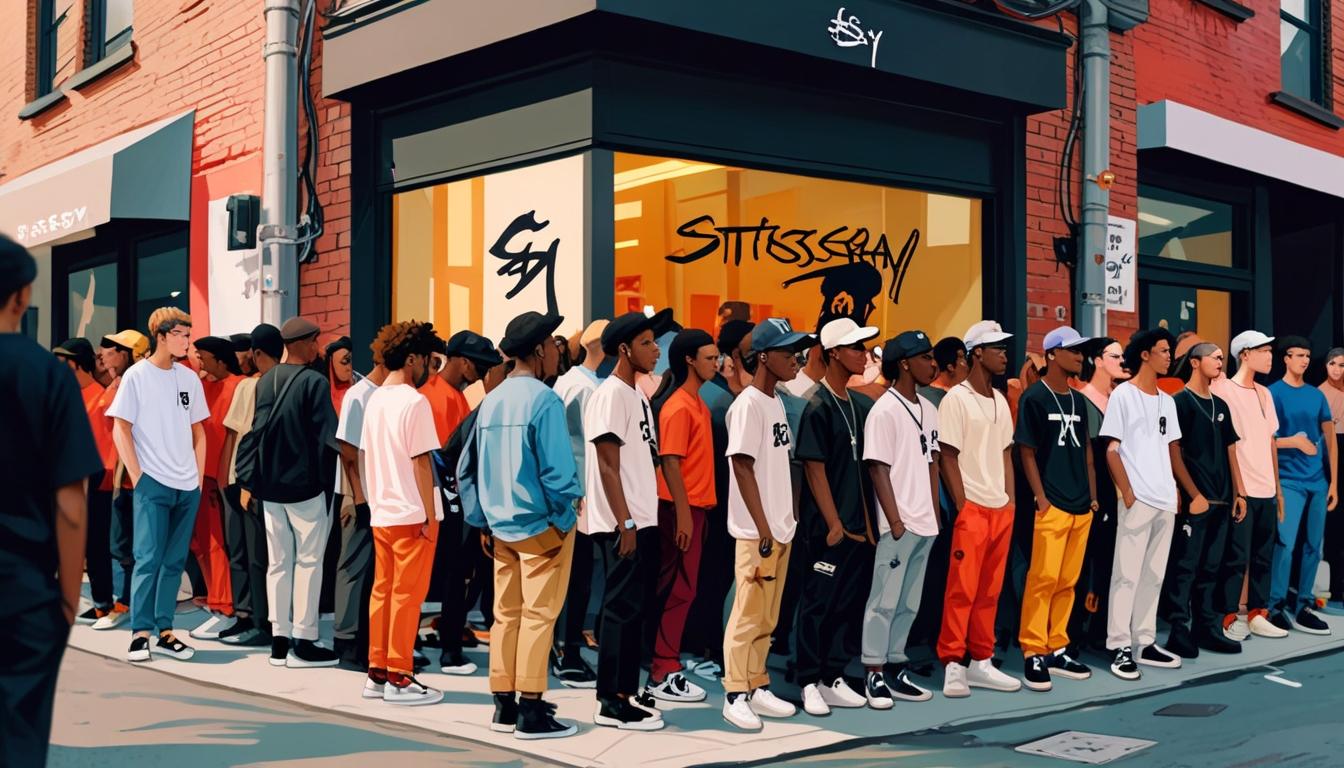Young designers like ZaiD Khatri and Mubassirah Khatri are redefining Indian fashion by merging traditional techniques with contemporary aesthetics, showcasing their creations on prominent platforms like Lakme Fashion Week.
In Ajrakhpur, a small village in Gujarat’s Kutch district, 21-year-old ZaiD Khatri has emerged as a rising star in the world of fashion. Despite his initial ambivalence toward the family tradition of block printing, Khatri’s artistic instincts flourished during the pandemic lockdown, leading him to develop a unique style that blends contemporary designs with traditional techniques. His journey took a pivotal turn when he joined Somaiya Kala Vidya, a skilling school for artisans focused on modernizing craft. “I never liked geometry, so I deconstructed, horizontal, vertical ko tod diya, added the fluidity of my paintings and did asymmetrical designs,” he shared. His innovative approach was showcased at the recent Lakme Fashion Week in Mumbai, where he presented a contemporary interpretation of ajrakh, emphasizing fluidity and modern aesthetics.
Khatri’s designs incorporate techniques such as block printing, tie-dye, and wax-resist dyeing of batik. His bold wash effects on cotton and silk garments are expected to dominate summer fashion trends, creating an exciting fusion of tradition and modernity. Alongside him, fellow artisan designer Mubassirah Khatri has drawn inspiration from human anatomy, merging elements of nature with fashion in her collections of stoles, shrugs, and co-ord sets. Both young designers retail their creations online, with ZaiD operating under the label Ajrakh Gharana and Mubassirah under Elysians.
As the fashion landscape evolves, khadi, a hand-spun and woven fabric, has gained renewed prominence as a summer staple. Designers are embracing its versatility, with Karishma Shahani-Khan of the label Ka-Sha highlighting it as an adaptable fabric ideal for various designs. “It is one of the most malleable textiles… Our khadi line is trans-seasonal with a lot of separates,” she noted, emphasizing the functionality and stylishness of her designs which cater to the multifaceted roles women occupy.
Nargis Zaidi, head of apparel at the Centre of Excellence for Khadi, expressed confidence in khadi’s growing stature, noting its competitiveness with private brands like FabIndia. The collection features vibrant color schemes and innovative layering techniques. According to Zaidi, one reason for khadi’s resurgence is its suitability for the loose, oversized fits that are popular in summer fashion.
In addition to traditional khadi, the mix-and-match philosophy is reshaping fashion trends. Tarun Tahiliani emphasizes that modern clothing should reflect personal expression and adapt to individual styles, allowing for a versatile wardrobe. This notion was encapsulated in his pret label, OTT, where he showcases interchangeable pieces that transcend age and occasion.
For men’s fashion, young designer Abhishek Shinde has created relaxed yet tailored silhouettes, featuring hybrid coats and fine cotton shirts. These versatile pieces align with a broad movement toward relaxed tailoring, which emphasizes comfort without sacrificing elegance.
The color palette for the season has also shifted, with designers like Tahiliani advocating for muted pastels that complement Indian skin tones, providing a calming elegance that enhances craftsmanship. Niki Mahajan has employed technology in her work, combining traditional khadi with digital prints to create unique designs infused with cultural motifs, demonstrating that tradition can coexist with innovation.
Overall, the recent developments in Indian fashion illustrate a significant shift toward sustainability, individuality, and a harmonious blending of traditional and modern elements, showcasing the rich heritage of craftsmanship while responding to contemporary trends.
Source: Noah Wire Services




Its not my first time to go to see this website, i am browsing this website
dailly and get good facts from here daily.